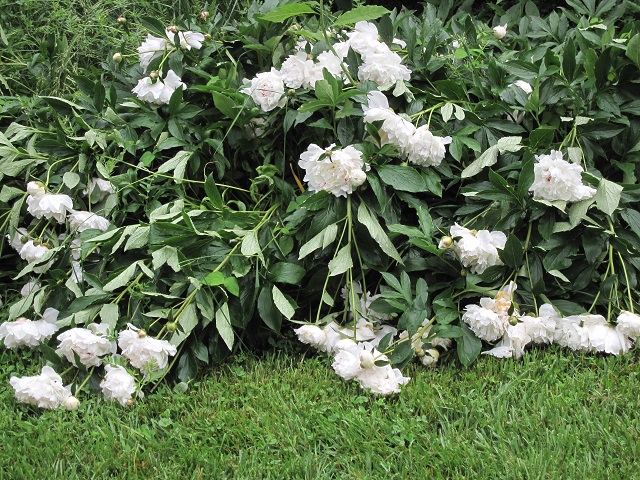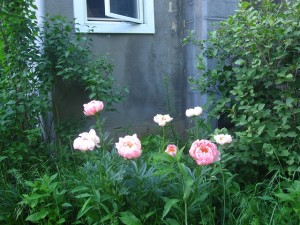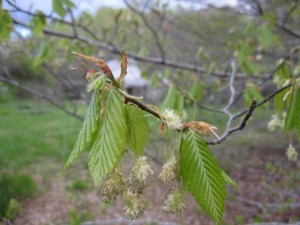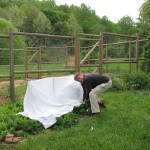It’s a good peony season here in the hollow, beginning with the old ‘Pink Charm’ John brought from the University, first given him by Mrs. Hereford for the Carr’s Hill garden back in the 70’s. It’s a single form with large golden stamens and a brazenly stinky scent! It’s followed closely by the classic ‘Festiva Maxima’, many people’s favorite, with blood-red flecks in the middle of their double icy hearts and an innocent lemony fragrance.
These early peonies are said to bloom best for the warmer climates. Very hardy in their home countries of Japan and China, Wyman says: “Able to withstand temperatures well below zero, it is especially cherished where winters are long, cold, hard and snowy.” But I have always thought of it as a belle of southern gardens. Another early one is from the old Blenheim estate near Monticello, a double deep rose-magenta with a very sweet scent. Peonies are said to often out-live the ones who planted them.
Now that the Festivas are beginning to tatter away, ‘Sarah Bernhardt’ (very showy with burgundy stripes) and ‘Gardenia’ (purest white) are beginning to fatten their buds. Mild weather has extended all the bloom times and with these two later ones, we should go into June, barring, of course heavy rains, wind or hail.
But it’s been a beneficent spring and we rarely have hail in the hollow. After all that flowering, the great beech has produced a few sprays of nuts. I hope it will bear every year now and feed the foxes, turkeys, jays, and deer.
The Regale lilies have budded with no emergency sheets needed for a final late frost, a first. Lightening bugs are beginning to rise out of the meadow and the frogs begin to croak in the evening.The creek rushes on, still running high. I think of our poor fellow citizens in California vainly painting their lots green.
Our clear nights have been cool with spectacular skies. Not much light pollution out here (although we occasionally see the glow of Charlottesville to the east), but even though our horizon is narrowed to a leafy oculus by the hills that surround us, what we see when we look up we see pure and bright. The winter constellation Orion no longer sets to the west. The moon is waxing (John gave blood and I’m starting seeds) and Venus is the evening star. The Big Dipper wheels to the north, but we’re too far down to ever see the Little Dipper.




